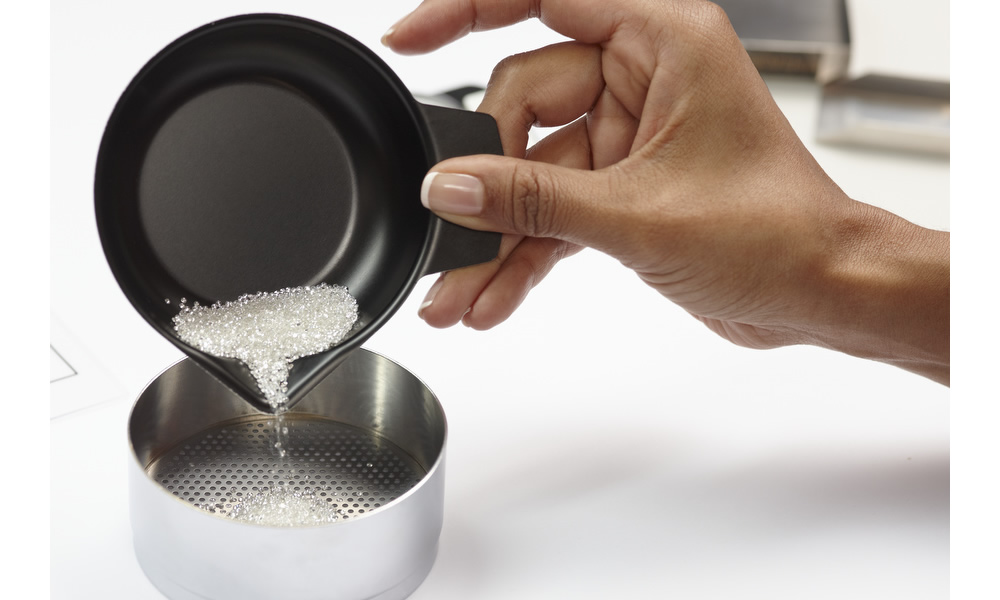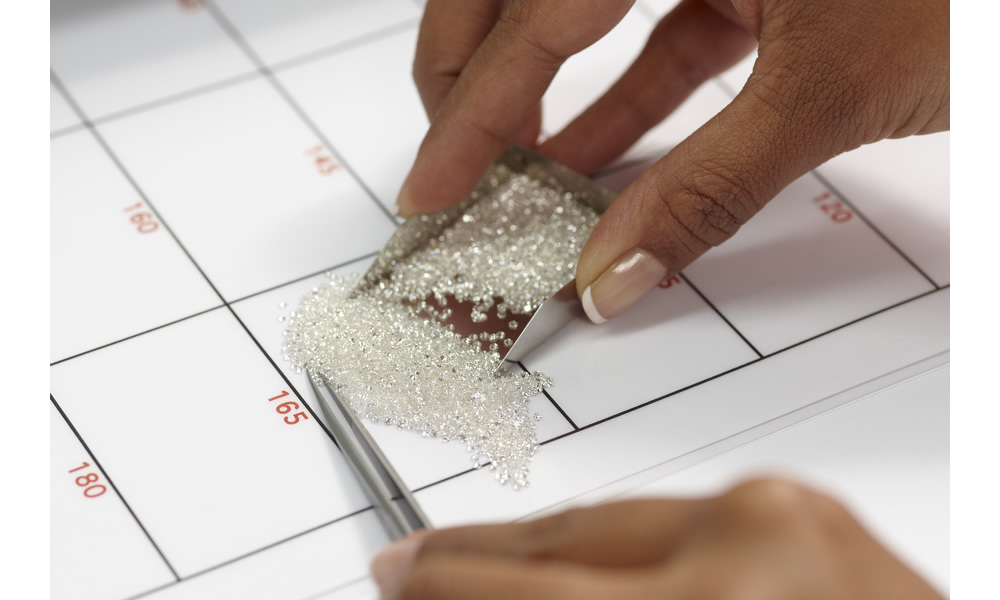Used as accents or for pavé, melee is an integral part of the diamond market.
Melee has always been an important player in the diamond market, accenting jewelry and creating sparkling pavé. Over the past 15 years, melee has become even more important to the diamond jewelry market as halo settings in engagement rings have been one of the most popular styles of the moment. In addition, as diamond jewelry has become more design oriented and as consumers have become more cost conscious, tiny melee diamonds have allowed for the creation of larger-scale designs that have big impact at a more affordable price.
Known to be the largest producer of polished diamonds, India is also the largest producer of melee. “Of the total melee production in the world, 90 percent of melee is estimated to be cut in India,” says Vipul Shah, from the Gem and Jewellery Export Promotion Council of India (GJEPC). Surat leads the country in manufacturing melee, accounting for 90 percent of the total produced.

[two_third]These very small diamonds have their own language that defines their size. Commonly referred to as “diamond chips” by consumers, melee diamonds are a staple in the industry, especially in designer jewelry. The term “melee” refers to a group of small diamonds and traces its origins to the French word mêlée, which means “mixed.” Melee can range in size from as small as 0.001, which is 1000th of a carat, to 0.15 carats, measuring approximately 0.6 mm to 3.5 mm in diameter. In the Indian trade, melee from 0.001 carats to 0.025 carats is called stars. The average number of pieces per carats in stars ranges from 40 pieces to 333 pieces. Stones in sizes ranging from 0.12 carats to 0.15 carats are classified as coarse melee.[/two_third][one_third_last]
“Due to the current economic scenario, the cutting of melee or any other diamond is not high on yielding profitability.”
[/one_third_last]
Melee is measured using diamond sieves, which are high-precision measuring instruments that consist of round metallic plates with precisely sized holes, shown below. Sieve sizes ranges from 000 to +16. Sieve sets can also be manufactured in quarter increments.



